Search
Search Results
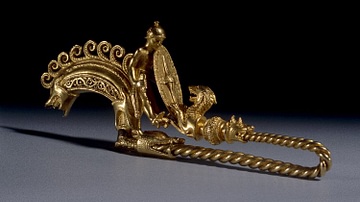
Article
Celtic Brooches
Ancient and medieval Celtic cultures produced many forms of jewellery, and one distinctive category is their brooches, fibulae, and pins. Without zips and buttons, brooches were used to close items of clothing, to create a pleasing or fashionable...
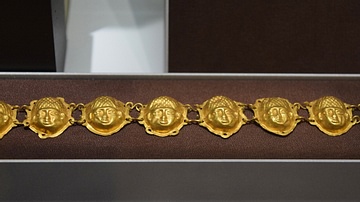
Image
Etruscan Gold Jewelry
A strand of a gold Etruscan necklace, found in Italy, dating back to between 800 and 500 BCE.
Field Museum in Chicago, Illinois, USA.

Article
Viking Hygiene, Clothing, & Jewelry
Although the Vikings are routinely depicted as rough, grimy, and violent, they were actually quite refined, took personal hygiene seriously, and wore fine clothes ornamented by jewelry. Some Christian chroniclers who condemned the Vikings...
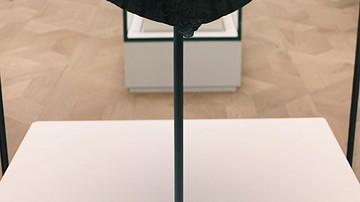
Article
Vikings: Jewelry, Weapons & Social Change at The VIKINGR Exhibition
In April 2019 The Museum of Cultural History in Oslo, Norway opened its doors to the new exhibition VÍKINGR containing rich treasures and unique archaeological finds from the Viking Age (c. 750 - 1050 CE). The Viking age is considered...

Image
Frankish Bird-Shaped Brooch
Frankish Bird-Shaped Brooch, second half of 6th century CE. This brooch would have been worn by a woman and is characteristic of Frankish jewelry and fine workmanship.
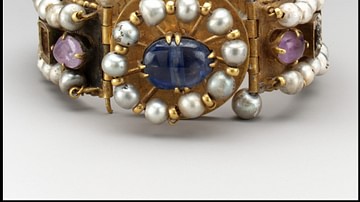
Image
Byzantine Jeweled Bracelet
Gold bracelet decorated with silver, pearls, amethyst, sapphire, glass, and quartz, 500-700. 3.8 x 8.2 cm.
Metropolitan Museum of Art, New York.
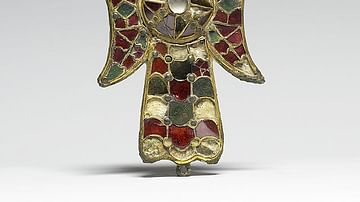
Image
Visigothic Fibula
This fibula (pin used for fastening a piece of clothing) is one of a pair made by a Visigothic artist out of gold over bronze with gemstones, glass and meerschaum. 6th century CE. Walters Art Museum, Baltimore, MD
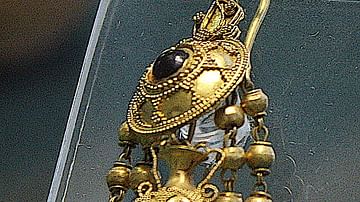
Image
Gold Filigree Earring, Herakleia
Gold and glass paste pendant earring with filigree and granulation. Acropolis, Herakleia, southern Italy. 1st century BCE. (Archaeological Museum of Siritide, Policoro, Italy)
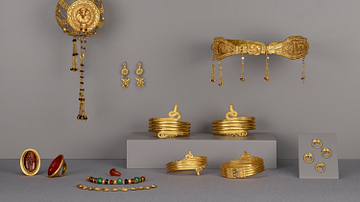
Image
Collection of Ptolemaic Jewellery
This opulent collection of Ptolemaic jewellery from Egypt probably belonged to a wealthy woman and was made between 225–175 BCE. The various pieces were made out of gold and are inlaid with a variety of precious stones. The collection...
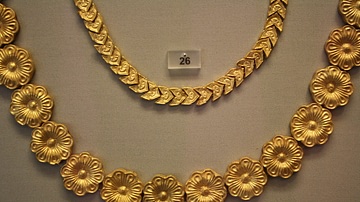
Image
Mycenaean Gold Necklaces, Dendra
A Mycenaean gold necklace from Dendra, 15-14th centuries BCE. (National Archaeological Museum, Athens)